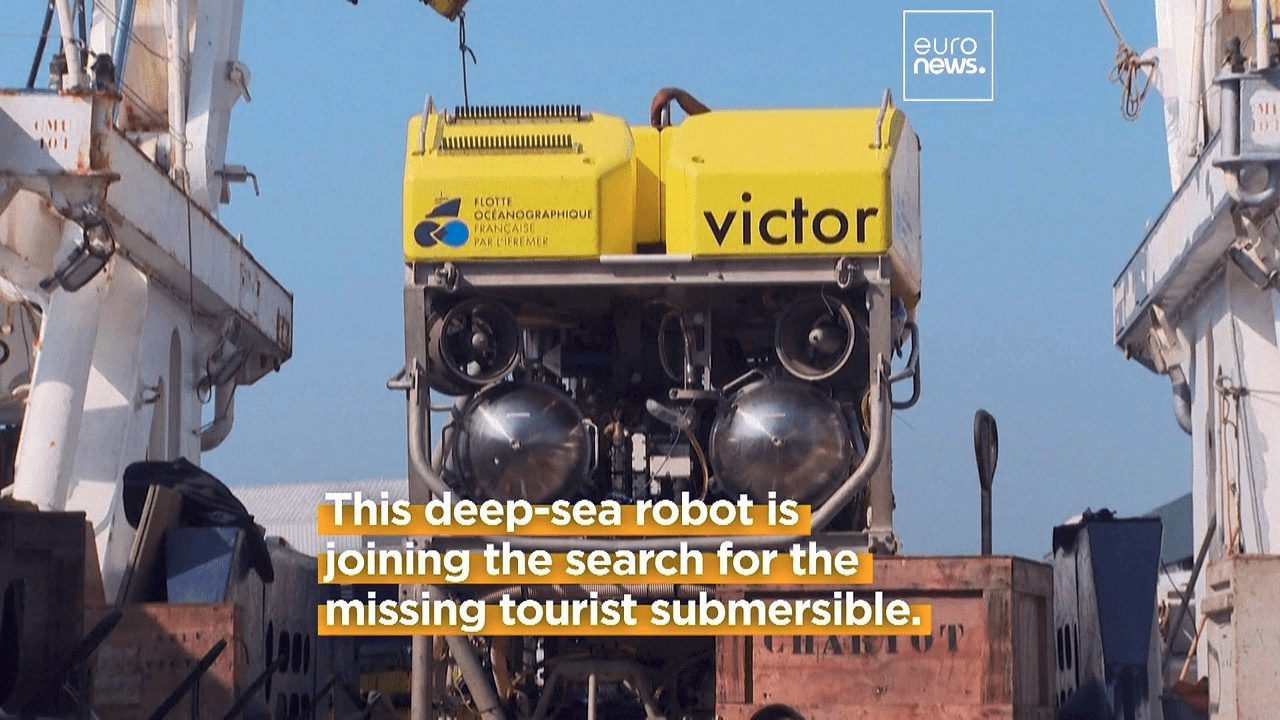Last month, the entire world was abuzz when five über wealthy explorers perished at the bottom of the Atlantic Ocean near the grave of the once “unsinkable ship.” Disturbingly, during the same week, hundreds of war-torn refugees drowned in the Mediterranean with little news of their plight. The irony of machine versus nature illustrates how tiny humans are in the universe, and that every soul rich or poor is precious. It is with this attitude that many roboticists have been tackling some of the hardest problems in the galaxy from space exploration to desert mining to oceanography to search & rescue.

Following the news of the implosion of the Titan submersible, I reached out to Professor F. Javier Diez of Rutgers University for his comment on the rescue mission and the role of robots. The aerospace academic is also an entrepreneur of a novel drone technology company that can fly and swim autonomously within the same mission. As he explains, his approach could’ve saved time and money in ascertaining the same unfortunate answer, “I think we could go down to 12,000. No problem. So now imagine sending a 20-pound [robot] down to 12,000 feet. You can do this in a couple of hours. You just throw it overboard, or you fly, you know you don’t need to bring in a crane, a gigantic ship, and all this very expensive equipment just to do that first look.” Dr. Diez’s sentiment was validated during the first press conference of US Coast Guard Rear Adm. John Mauger when he cautioned the media of the huge logistical undertaking in moving such large equipment to a remote, hostile, area of the globe. Diez continued, “We could have been there in a couple of hours. So of course, you know there’s more to it. But I was just saying that long term I can see how very small robots like ours for search and rescue could be huge. We are doing some work. We actually put some proposals with the submarine community. I think this has a huge application because again, these 20-pound [drones] are something you can deploy from anywhere, anytime.”
In breaking down his invention, the drone CEO elaborated on the epiphany that happened in his lab years earlier by overcoming the conventional wisdom that an uncrewed system that operated in two modalities (marine and air) required two separate propulsion systems. He further noted that two propulsion systems were very inefficient regarding burning energy and functionality. “And this was I would say a mental barrier for a lot of people, and it still is when they see what we put into it.” He explained how he first had to overcome so many industry naysayers, “I brought this to some folks at NASA, and everyone was saying, it’s not going to work. And then when you look at what’s behind the propeller design and the motor design, you realize that we cannot be living on an edge. We designed propellers for a very specific condition, which is air.” However, the innovator challenged the status quo of the aerospace community by asking, “Can you design propellers and motors for water? And it turns out that you can.” He deconstructed his lab’s research, “So if you look at the curve for air, and you look at the currents for water, they intersect, and if you do it the right way, you can be efficient in both places. So that was the breakthrough for me to be able to show. And we actually show that you can design propellers that can be efficient in both air and underwater.”

After sharing insights into the design, he then conveyed to me that the programming of the flight controls was the next hurdle to overcome. “The next challenge is the transition. So we worked very hard from the very beginning on that transition from water. We actually have a patent on this and it’s really the heart of our technology. I call it dual-plane propulsion. You have 2 propellers on the top and two propellers on the bottom. So when you’re on the surface, the bottom ones are in the water and the top ones are in the air. So the bottom ones are like when you have a baby and you are pull-swimming. Babies are not very good at swimming, but if you put your hand on their bellies all of a sudden they become great swimmers. So think of it as the bottom propellers. When the vehicle is on the surface, the bottom propellers are keeping it very very stable. So now that you have that stability, the top [propellers] can work together to get [the drone] out of the water. So that’s how we accomplish the continuous transition. You can go in and out 100 times,” bragged the Professor.

Diez’s company SubUAS is not a theoretical concept, but an actual product that is currently deployed by the US military, and looking to expand into commercial markets. “So we’d been a hundred percent with the Department of Defense. They really supported the development of technology.” He now is itching to expand from a Navy Research-funded project to new deployments in the municipal and energy sectors. “We have done a lot of different types of inspections related to ship pylons. Now, we have [Florida’s] Department of Transportation interested in this technology,” said the startup founder. “What I realized over the last year or so is that defense has its own speed. You cannot really push it. There is a specific group now in defense that is encouraging us, but it takes a couple of years,” he quipped. Optimistically, he envisions being profitable very soon by opening up the platform for commercial applications. “Now we’re starting to see the fruits of that [effort]. I can tell you that we got approved in Europe to do offshore wind turbine inspection later this summer. However, he is most excited by bridge inspections, “We have over half a million bridges in the USA. And like at least 50,000 to 200,000 have something seriously wrong with them. I mean, we’re not doing enough inspections. So having a vehicle like the Naviator that can look at the underwater part of the bridge is huge.”

He has also been approached by several companies in the energy industry. “And then there are a lot of interesting assets within the oil and gas, but we are discovering this. It’s kind of almost like a discovery phase because nobody has ever had the capability of doing air and marine.” He described that there are many robots like ROVs (Remotely Operated Vehicles) inspecting rigs on the marine’s surface and aerial drones looking from the air, but no one is focused on the splash zone [where the two meet] as they never had dual modality before. He further illustrated the value proposition of this specific use case, “Nobody gets close to the surface. So they’re saying that that’s a huge application for us.” Long-term, Diez imagines replacing tethered ROVs altogether as his system is easier (and cheaper) to deploy.

Today, SubUAS’ business model is on an inspection basis, but over time it will center around data collection as they are the only waterproof aerial drone on the market that can swim. “We go to the bridge inspectors, and we work with them to simplify their lives, and at the end of the day reduce the risk for the diver. So they know what we are doing is making their lives easier.” However, that is only the tip of the iceberg, because “it’s not so much about the hardware or the sensors, but the data that you collect. We think cloud services are huge as it allows you to sort and analyze it anywhere.” He concluded by sharing that his next model will be utilizing a lot of artificial intelligence in interpreting the condition and autonomously planning the missions accordingly. Maybe soon, virtual explorers could look at shipwrecks as well from the comfort (and safety) of their couches.


Oliver Mitchell is the Founding Partner of Autonomy Ventures a New York based venture capital firm focused on seed stage investments in robotics





